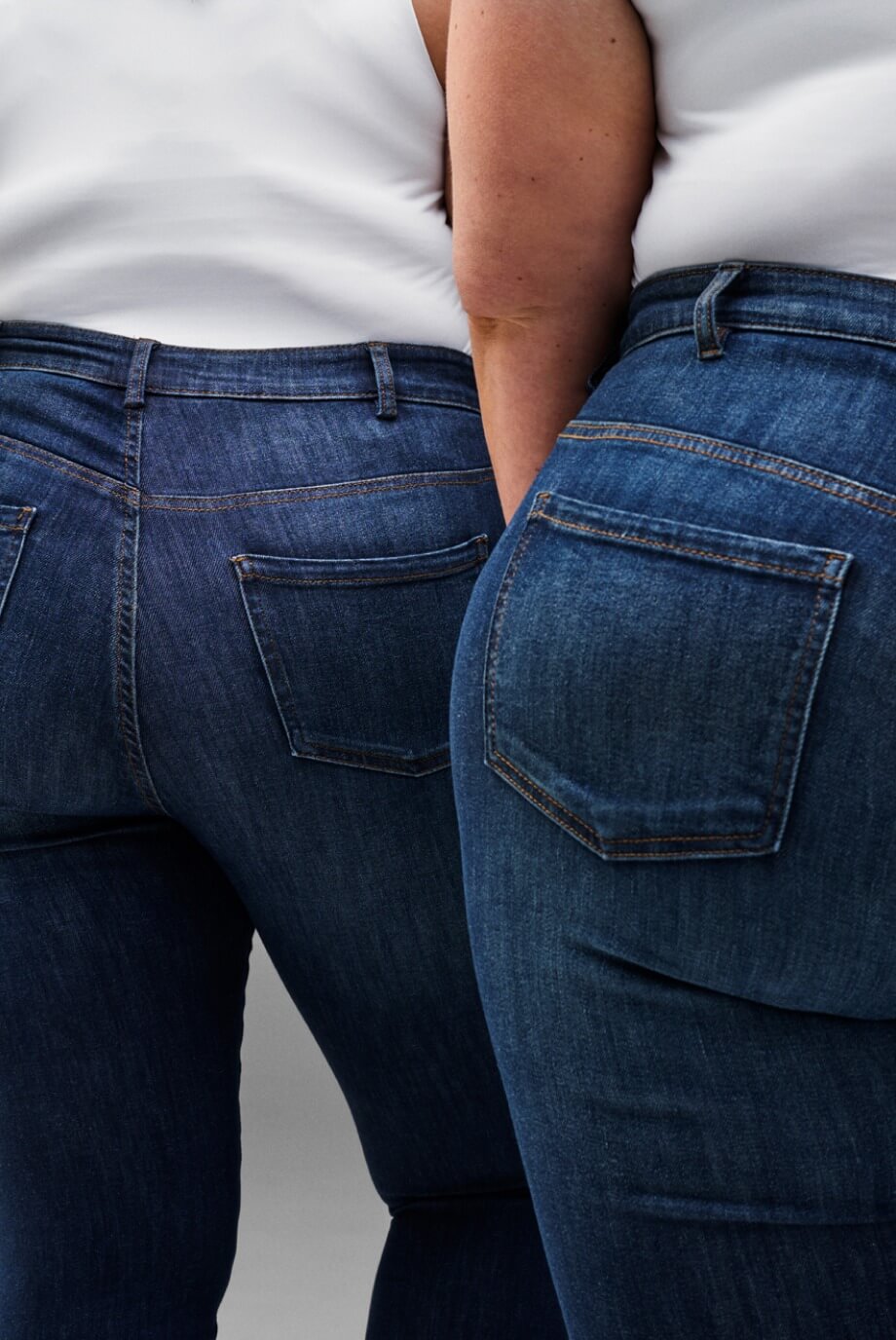When the cold comes knocking, you know it's time to find the best winter jacket for women. But with so many options available, it can be hard to know what to look for. Here, we help you make the right choices and considerations to ensure you find a winter jacket that suits you and your needs.
Continue reading below and learn more about winter jackets and our tips for maintaining them.
What Makes a Good Winter Jacket?
A good winter jacket depends on your needs, preferences, and the climate you're in. Of course, it should be warm and protect you from harsh weather conditions with the right features. Below, you can read more about some of the factors you should consider when looking for good winter jackets for women.
Insulation and Warmth
First and foremost, your winter jacket should keep you warm. With low temperatures, cold winds, or even snow, insulation is one of the most important factors. There are different materials that are good for keeping you warm, and you can read more about some of them below.
- Down: Down is one of the best materials when it comes to the insulation of winter jackets. Down filling is both lightweight and compressible, providing good insulation and warmth. It effectively absorbs heat and retains body warmth in cold weather conditions. These properties make the down jacket an ideal companion when you want to tackle winter's cold with comfort and style.
- Wool: Wool is a natural material with excellent insulating properties. It retains heat and is great for regulating body temperature in cold weather. It is also breathable and moisture-absorbing, so you can be sure to stay warm and dry even in damp weather conditions. Therefore, a jacket made of wool or a wool blend is an obvious choice for a winter jacket.
- Sorona: The special material Sorona has several good features. It is soft, durable, quick-drying, and provides lightweight and breathable warmth. It is also a sustainable material, made from 37% plant-based materials. All of this makes Sorona insulation a material that feels light but is also practical and warm.
- Synthetic Materials: Some winter jackets use synthetic material for insulation. These synthetic fibers are designed to mimic the properties of natural insulating materials but have the advantage of retaining their insulating ability even when wet. They are also lightweight, durable, vegan, and hypoallergenic.
In addition to choosing the best materials for insulation, there are also other factors to consider if you want to stay warm in your jacket. The thickness of the insulation obviously affects the warmth - the more insulation, the warmer the jacket. Moreover, the fit also matters. With a loose fit, the cold can penetrate under the jacket, while a tight fit minimizes that risk. It's also a good idea to use the practical features that winter jackets often have, such as hoods, cuffs, and adjustable closures. Last but not least, the outer material must also be able to withstand the weather. If rain or snow penetrates the outer layer and into the insulating material, your winter jacket will become cold and wet instead of warm. Therefore, make sure to choose a resistant material.
Breathability
To keep warm in your winter jacket, it's important that it is breathable. Breathability refers to a fabric's ability to let moisture (such as sweat) escape while preventing external moisture (like rain or snow) from penetrating. Therefore, good breathability is important to prevent moisture from accumulating inside your jacket.
The body generates heat, and when we are active, it also produces sweat to regulate body temperature. If your winter jacket is not breathable, the body's heat and any sweat will settle in the jacket, resulting in you feeling damp and cold. Therefore, it's an important factor to consider when looking for the best winter jacket for women.
Wind and Waterproofing
When it comes to winter jackets, the importance of windproof and waterproof features cannot be overlooked. These are the features that ensure you stay warm and dry even in the harshest weather conditions. Windproofing, often achieved through tightly woven fabrics or special coatings, acts as a barrier that prevents cold air from penetrating your jacket and causing heat loss. At the same time, waterproof materials (such as Gore-Tex) and seam-sealing techniques are crucial for repelling rain, snow, and sleet. You could say that these advanced technologies form a shield that keeps you dry even in the wettest environments. So, it's a good idea to pay attention to your winter jacket's wind and waterproofing capabilities.
ALSO READ: Guide on Breathability and Waterproofing
Durability and Quality
It's well worth investing in durability and quality when you're looking for good winter jackets for women. With a focus on every single detail, the best winter jackets are built to last for many seasons. Robust seams ensure that the jacket can withstand the toughest conditions, while reinforced areas add extra protection where it's most needed. If the zipper is of good quality, it will glide effortlessly, so you won't have trouble with it in rainy or snowy weather while wearing gloves.
Why is good durability so important? Because a winter jacket that stands the test of time provides excellent and long-lasting value. You'll be able to use it again and again, no matter what activities you engage in during the cold weather. Therefore, you should see it as an investment when you buy a winter jacket that can keep you warm and comfortable year after year.
Comfort and Fit
You'll likely be using your winter jacket quite a bit, so there's a good reason to prioritize comfort and fit. Good comfort and the right fit ensure that you're not limited in your outdoor activities and that you have the freedom to move. In this context, adjustable features are beneficial, allowing you to customize and fine-tune sleeves, hoods, and the like according to your preferences and weather conditions. In addition to providing good comfort, the right fit will also improve the jacket's insulating ability, allowing you to stay both comfortable and warm for longer periods. Therefore, the combination of comfort and fit is crucial when you're looking for a winter jacket you'll want to wear throughout the cold winter days.
The Most Popular Types of Winter Jackets
There's a wide range of winter jackets to suit different needs, styles, and preferences. If you're not sure what type of winter jacket you need, you can find a brief description of the most popular kinds below. Whether you focus more on style or functionality, there's a winter jacket that's right for you.
- Wool Coats: With a wool coat, you get a winter jacket that is both elegant and warm. The wool coat is in fashion every winter, so if you want to invest in a timeless classic, this is the one to go for. At the same time, wool has the natural properties of helping to regulate body temperature and absorbing moisture without feeling damp. Here you can achieve a classic look without compromising on warmth.
- Parka Jackets: The parka has long been a symbol of warmth and versatility. Long parkas provide extra protection against the cold, and warm parkas are typically lined with down or synthetic materials, keeping you warm in all kinds of weather. Additionally, the hood, adjustable details, and practical pockets make the parka an obvious choice, whether you need it for everyday use or hiking.
- Puffer Jackets: You will maintain both style and comfort if you choose a puffer jacket. Its distinctive, bulky design with quilted blocks makes it not only stylish but also incredibly warm. Puffer jackets are often filled with down or synthetic fibers, which keep the cold out and the warmth in. Despite the jacket's bulk, it is lightweight, making it good for all kinds of outdoor activities. You will also find puffer jackets in different colors and styles, making them suitable for any occasion.
- Softshell Jackets: One of the more practical jackets is the softshell jacket. It is made from a technically advanced material that is windproof, water-repellent, and breathable—making it ideal for changing winter weather. Softshell jackets also provide excellent freedom of movement and are therefore suitable for activities like cycling, skiing, and hiking. Choose the jacket in a bright color or a beautiful pattern if you want to add some personality.
- Down Jackets: The jacket most people associate with a winter jacket is the down jacket. It is named for its insulation of fine down feathers, which provide a soft and warm insulating layer. The small feathers create a thick layer with plenty of air pockets, which keep you warm. The light feathers make the jacket compressible, so you can take it with you.
- Ski Jackets: If you need an alternative to the classic winter jacket, you can use a ski jacket. It is best for winter sports activities, as it is designed with special features for just that. For everyday use, you most likely won't need the many features, but if you're going skiing, this is the jacket to go for.
Which type of winter jacket is warm?
You can choose anything from a wool coat to a puffer jacket when you're looking for a warm winter jacket. It depends on the insulation material, the fit, and the practical features. Therefore, there are several different types of winter jackets that are warm. Find the one that suits your style and needs.
5 Tips for Maintaining Your Winter Jacket
If you want to be sure to use your winter jacket for more than just one season, it's important to take care of it. When you properly maintain and store it, you can extend its lifespan, so it retains its good features, and you don't have to go out and invest in a new one next winter.
To best maintain your winter jacket, you can follow our 5 tips below.
1. Cleaning: As a starting point, wash as infrequently as possible. When you do wash, always follow the washing instructions. Most winter jackets can be washed at low temperatures with mild soap, while others require professional cleaning.
2. Dry Care: Avoid tumble drying your winter jacket, as it can damage the insulation and material. The best thing would be to let the jacket air dry. Also, make sure the jacket doesn't lose its shape when you dry it.
3. Storage: When the winter season is over, store your jacket in a dry and dark place—away from direct sunlight and heat. You can put it in a garment bag, but don't store it in a basement or garage where it can be damp. You risk damaging the material that way.
4. Maintenance: Make sure to regularly maintain your winter jacket. If you discover a hole or wear, repair it as quickly as possible to prevent further damage. Also, keep an eye on zippers, buttons, and seams to ensure they function optimally.
5. Waterproofing: It's a good idea to waterproof your winter jacket occasionally. That way, you're sure it remains water-repellent. If your jacket is already water-repellent, you can still waterproof it, as it will lose its effect over time. That way, you're sure to stay dry all the time.
































